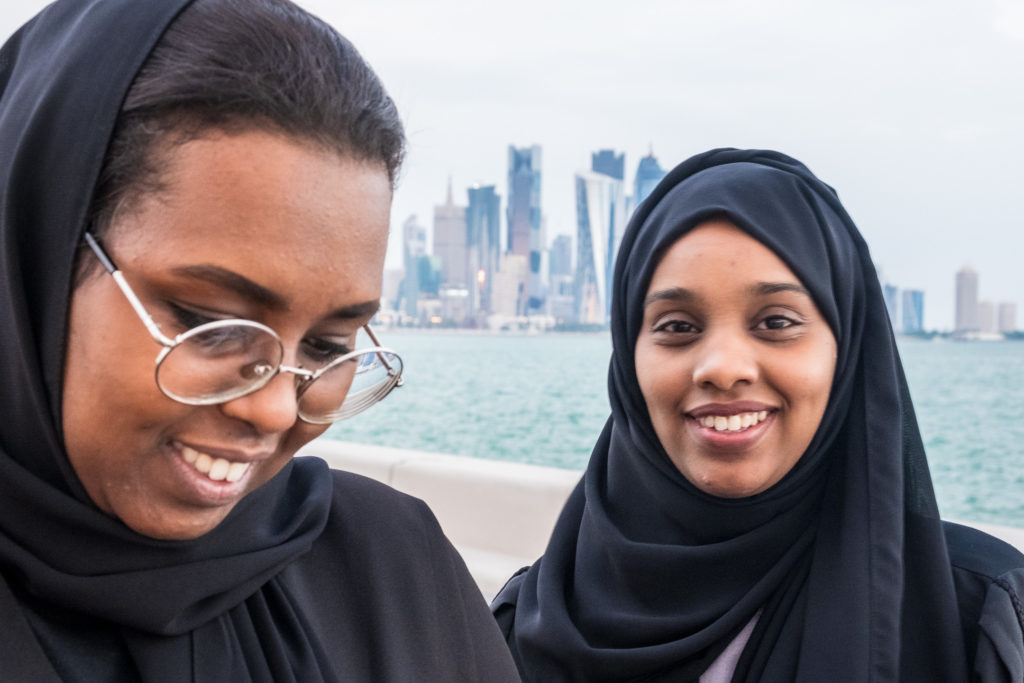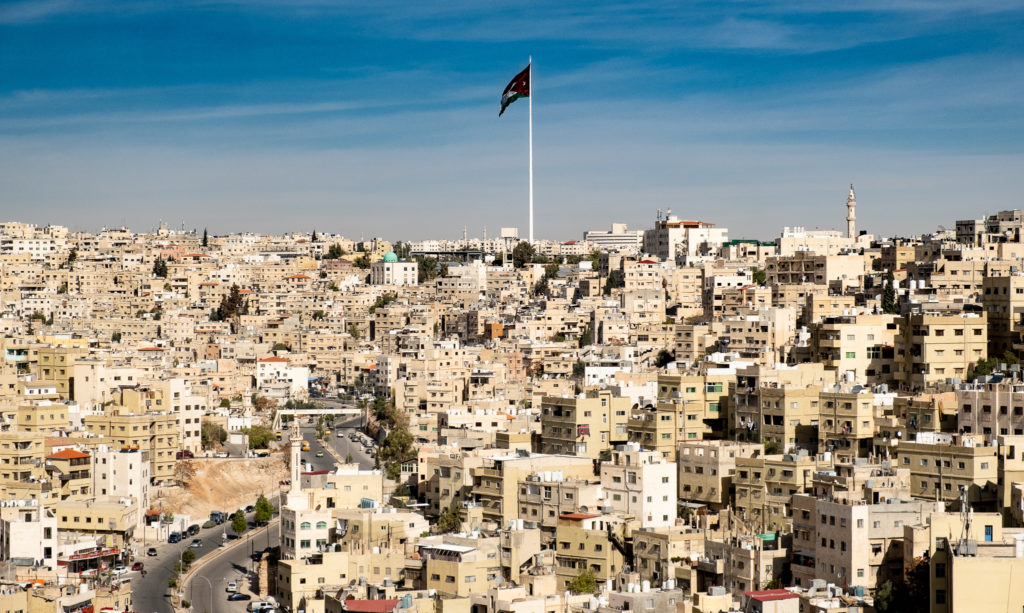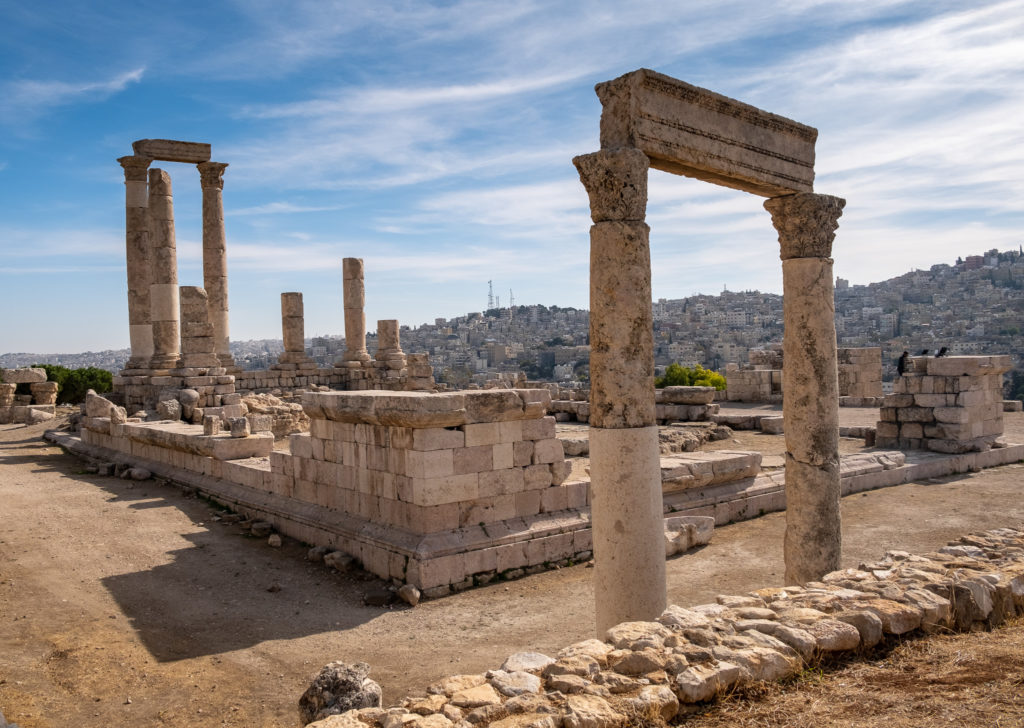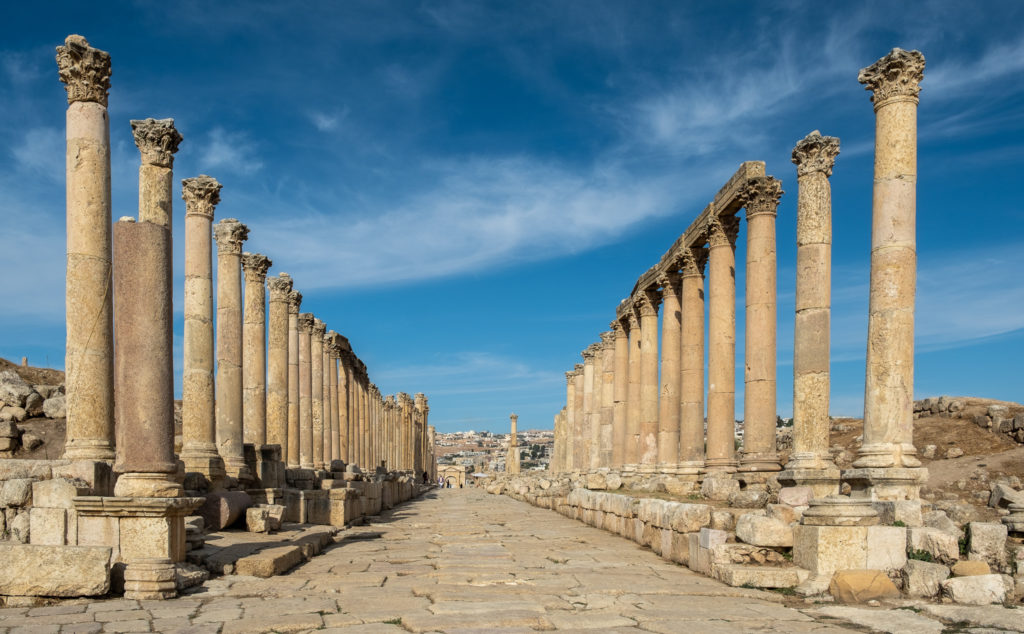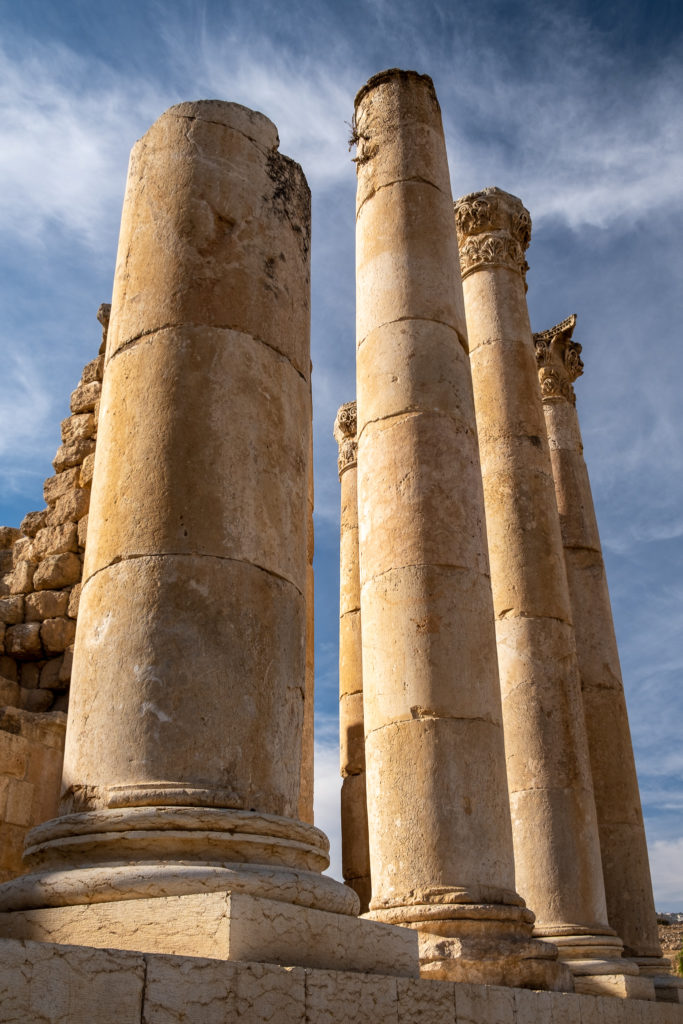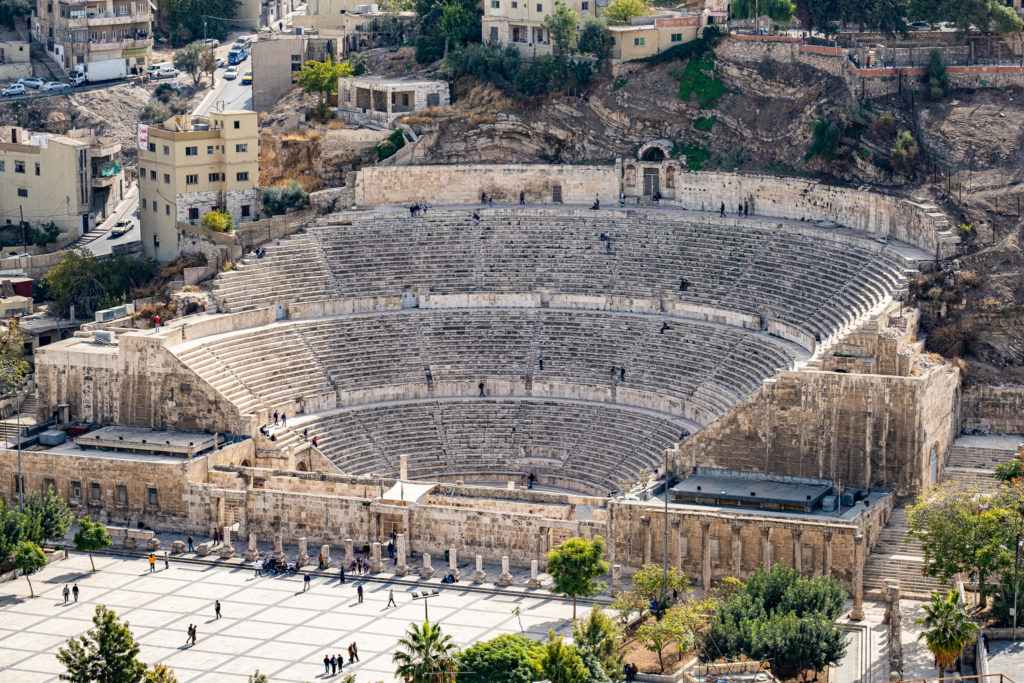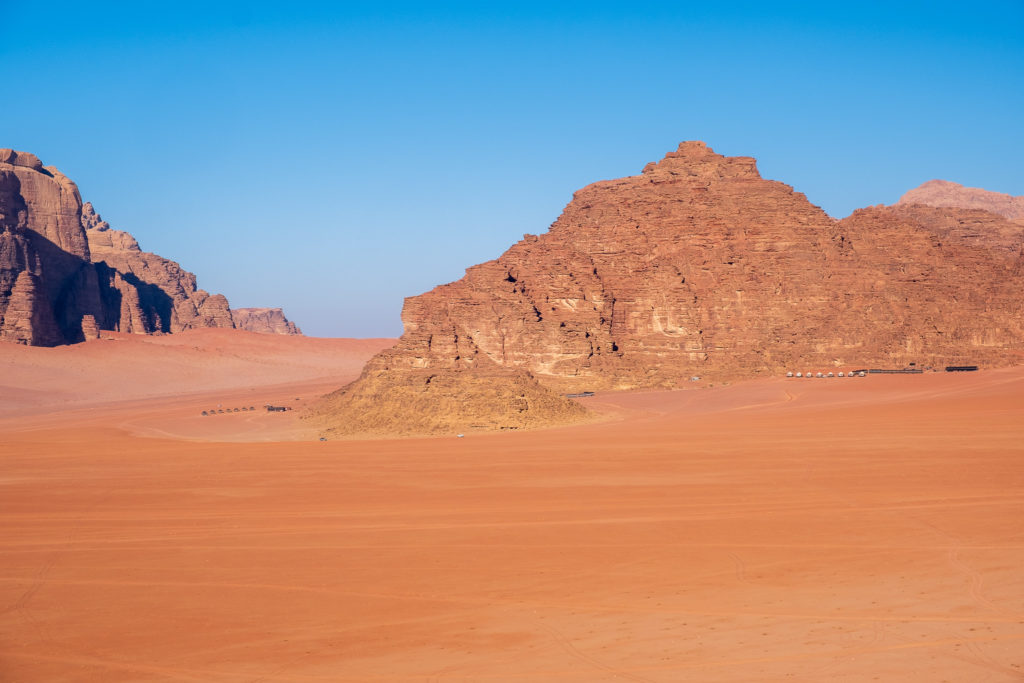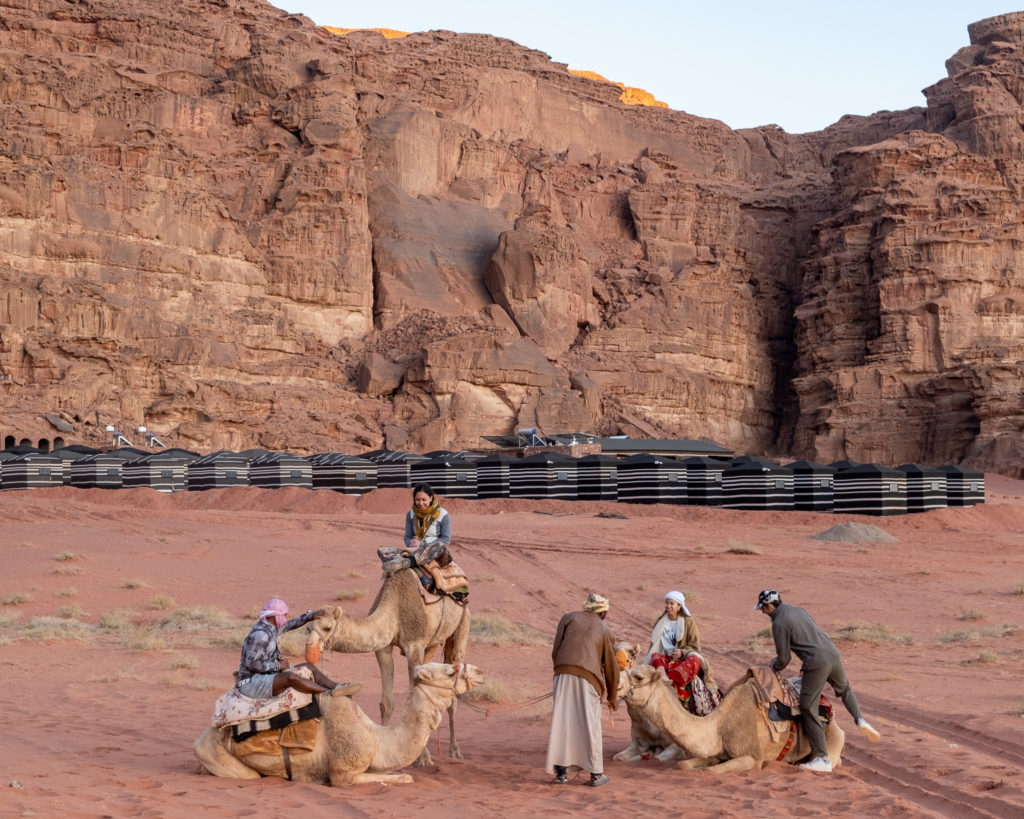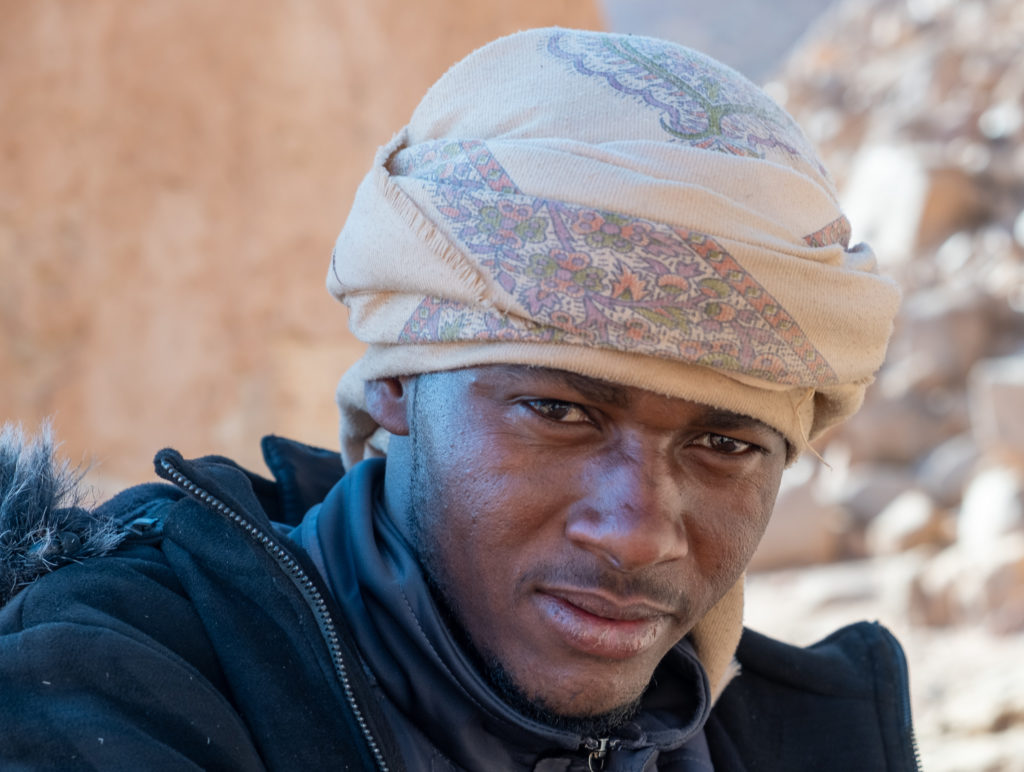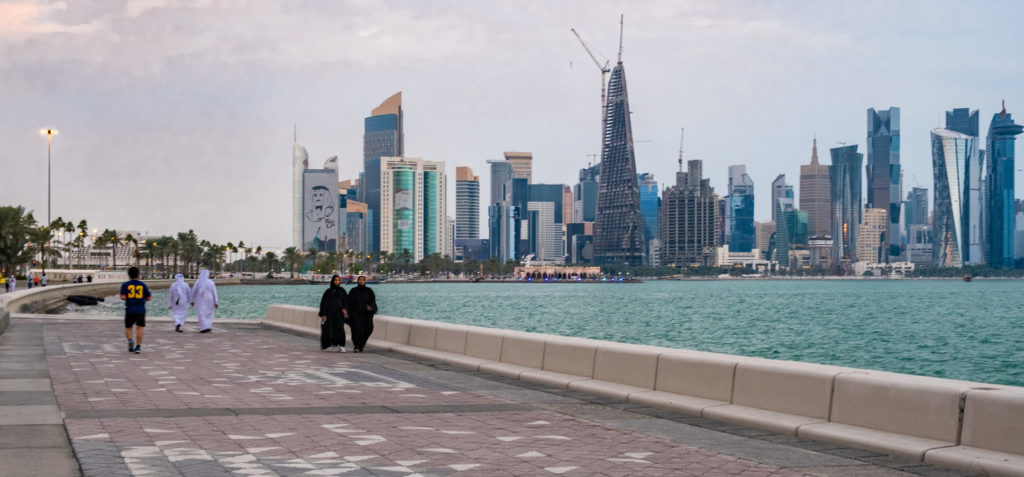
You say cut’-ter, I say ku-TAR’ so let’s call the whole thing off.
(Sorry, that’s for my mother in law – RIP, Nonnie – who loved her corny old songs.)
And, now, I’ve been there and I still don’t know what the correct pronunciation is. What I DO know is, that by any name or pronunciation, that place is fascinating.
No one I told I was going thought it was a good idea to go. And, not only because the penalty for drinking alcohol is getting lashed in public. Okay, I’m being dramatic. It’s true, Qatari Muslims have been known to be lashed for consuming alcohol (dictated by Sharia law which dominates civil law in Qatar). But the alcohol consumption laws have been somewhat relaxed for tourists. You are able to purchase alcohol in some of the 5 star hotel bars and restaurants for instance. It’s pricey, but it’s doable. And, Qatar is hosting the World Cup in 2022 so out of necessity the prohibition of alcohol will yield to what they’re calling “fan zones”. It’s going to be so interesting to watch the media cover the culture clash of revelry, if not debauchery, associated with soccer’s World Cup and the opprobrium generally associated with Islam’s relationship with alcohol consumption. ESPN, you’ve got your work cut out for you.
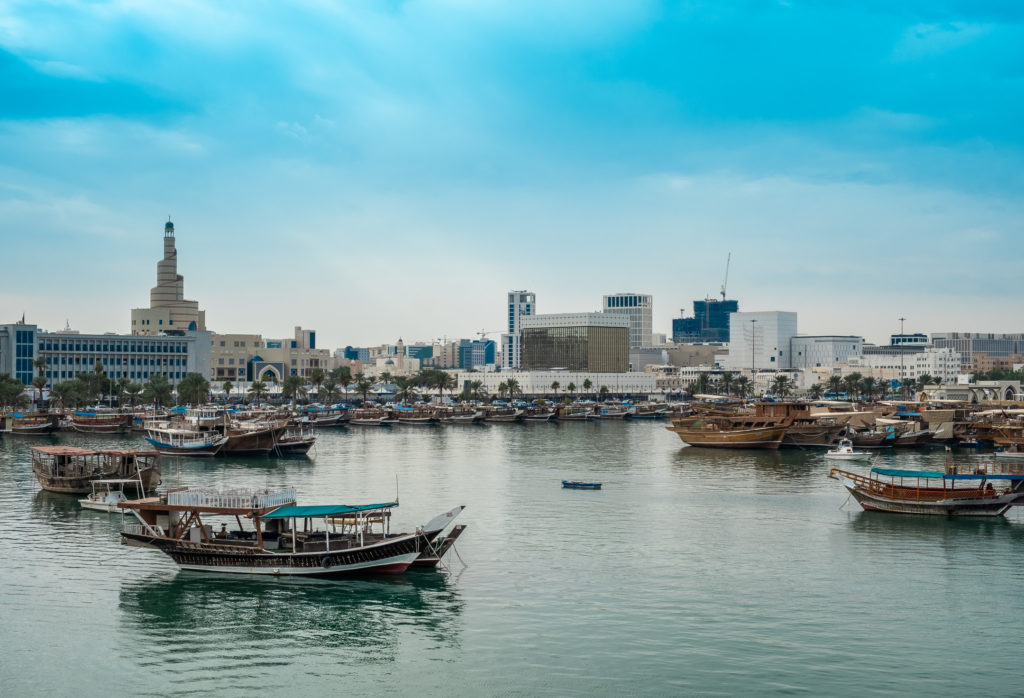
Back to me and my alcohol consumption in Qatar. Yeah. No. There wasn’t any. I could have had a drink in the bar at our hotel but it was smoky and a little creepy and it had the stink of desperation about it so I took a pass and congratulated myself on my ability to do as the Romans do, or in this case, as the Muslim population of Qatar does. (At least in public – more about this in a later postcard.)
So, I set about learning from our guide as much as possible about the place, the people, the customs and the history and each one of those topics is complicated if not wildly inscrutable.
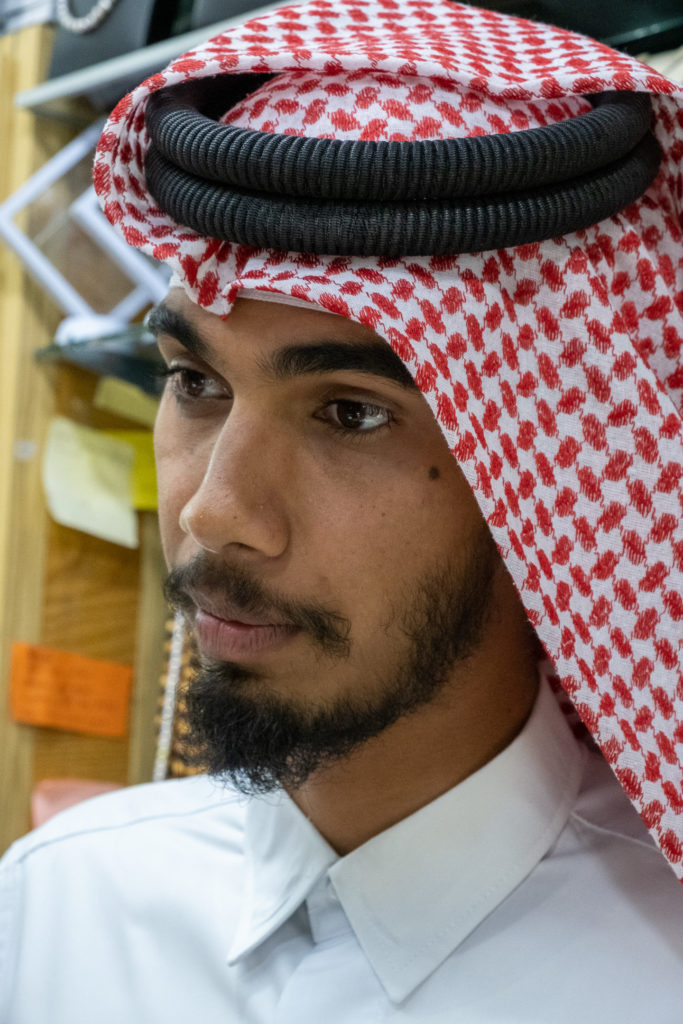
People first.
Slightly fewer than three million souls inhabit the State of Qatar and approximately 12% are what are known as “locals” or people who are indigenous to Qatar from the ruling Al Thani clan which has ruled this constitutional monarchy (pretty benevolently, all things considered) since the middle of the l9th century. The remaining population are all migrant workers, (“expats”) and almost half the country are from the Indian subcontinent. Another couple hundred thousand “expats” are Egyptian and fully a quarter million are Filipino. Islam is the official state religion so it’s unsurprising that nearly 70% of the total population practices it with most practicing the very austere sect known as Wahhabism. An estimated 5-15% follow Shia Muslim doctrine but the distinction between those two lies beyond the scope of this postcard and will most likely elude my true understanding for all eternity. Our guide was a young Muslim Indian fellow from the state of Kerala, India and he was unapologetically besotted with his adopted home. His knowledge of Islam was a gift as he instructed us about his devotion both inside and outside of various mosques. He even demonstrated the correct prayer positions, posing for Pablo’s camera and delighting in our interest.
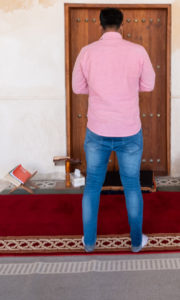
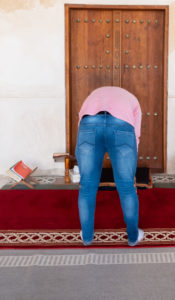

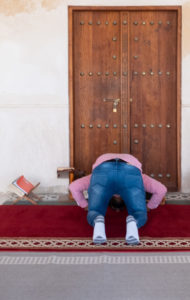
He described all things Qatari in an exceptionally positive light. He frankly loves and admires the locals and he claimed that his positive feelings were standard among the worker expats. When I told him that I had read up on Qatar and that they’d had some issues with labor in terms of their strict economic system that is described by some outsiders as “feudal”, he scoffed. Writing off some of the international community’s objections to Qatar’s economic structure as “jealousy” he claimed that there were no unhappy people, no poor people and no homeless. Indeed there were no visible homeless, poor or unhappy people. The quality of life in Qatar, at least on the surface available to tourists, is supremely high. Our guide’s breakdown of the economic social structure went something like this: there are rich people, very rich people and then obscenely rich people. All of these people are among the category known as “locals”. Rich on oil and gas money every citizen (and you can only be a citizen if you are a local) owns several villas, a half dozen SUVs, travels extensively and sends their kids either abroad to university or to one of the many implanted foreign based colleges at the glorious Education City. In fact, Qatari citizens enjoy the highest per capita income in the world! As a tourist you will have little to no interaction with them. Your direct interface will be with the foreign ex-pats who work in the hotels, restaurants and tourism industry. You’ll have a few “local spottings” especially if you go to the malls (which are stunning, by the way, and though they were nearly empty in November, during the summer, when temps can go up to 130 degrees F., the malls are mobbed. The very excellent roads are another good place for local sightings as they seem to love their cars. They are, however, terrible drivers and often were witnessed juggling a mobile phone, a sandwich and a beverage behind the wheel of an expensive vehicle. I wouldn’t drive in Qatar if you gave me a brand new Porsche to do it.
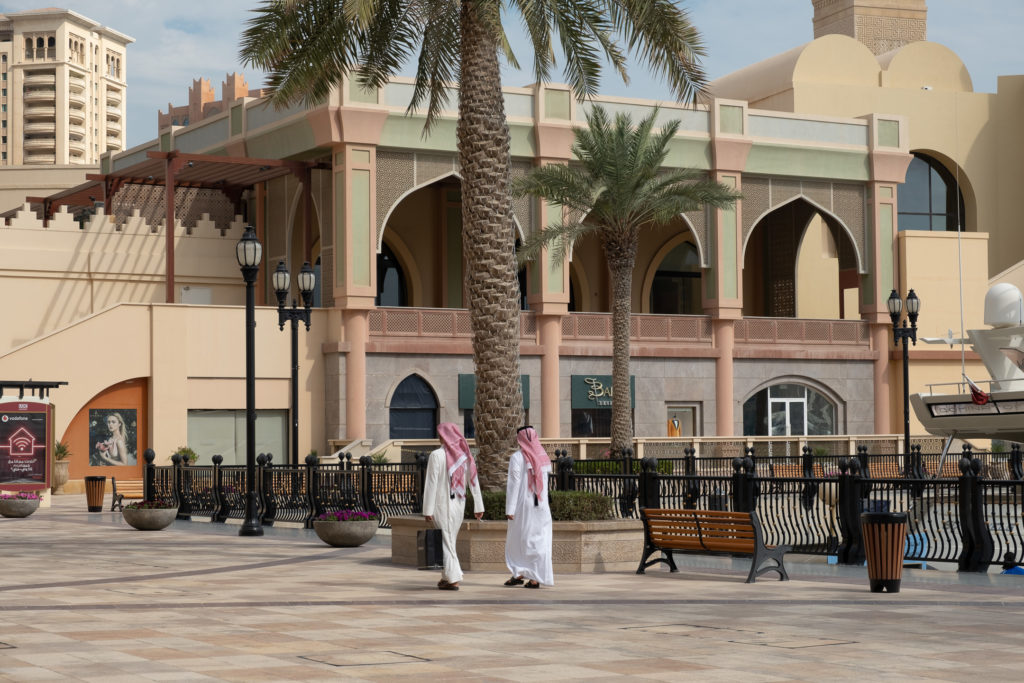
The geography of Qatar is a bit unique as it’s a tiny little peninsula with only one shared physical border (Saudi Arabia) and they still remain under a blockade that began several years ago by the neighboring Arab countries who have said that Qatar supplies terrorist organizations in other countries with funds. (This accusation has been denied.) You can still see the ubiquitous stencil of the Emir’s face EVERYWHERE from the sides of buildings to the rear windows in cars as a national gesture of solidarity and support for the Emir’s response to the blockade. Indeed, Qatar has not only survived the blockade, they have turned a crisis into an opportunity and out of necessity several heretofore non-existent industries have sprung up and become hugely popular and successful. One of these is agriculture. Where none existed prior to the blockade, a promising if nascent hydroponic farming industry dots the desert landscape courtesy of the desalinization of ocean water. Perhaps this kind of comeback shouldn’t surprise anyone. When the very prominent pearling industry collapsed in the early twentieth century thanks to the invention of the cultured pearl in Japan, Qatar turned to oil and natural gas exports to become one of the richest countries in the world. They know how to pull out of an economic nosedive for sure. As for the Emir’s face everywhere, students of Islam will note that according to Koran, it is forbidden to reproduce human faces and images as this is seen as blasphemy. Even I knew that much from having visited the Alhambra in Spain where nary a human face can be seen. Nor animals or other living creatures. In art at least. So, what gives? Well, according to our (very very devout) guide, the Emir’s face everywhere, while extraordinary, has come to provide a certain kind of national calm. “Everything Is Going To Be Alright” became the rallying cry during the worst of the blockade and thus, an allowance for a suspension of that aspect of religious doctrine. And, also, let’s be honest…commercial enterprise. You can’t have a mall without advertising and you can’t have advertising without pictures of pretty people. There’s that.
So, what’s a DoNOTmiss in Qatar? I’d say, the absolutely gorgeous main Mosque, (the only Mosque in all of the middle east that required I cover my clothes and head) the Opera House and the old Souk at night when it’s bustling. (Dead as a doornail during the day.) Don’t miss the Arabian Falcons. A brisk business of live birds all throughout the Gulf Countries is centered here even with the blockade. There’s an historic old fort way, way out at the end of the peninsula that actually did get Unesco World Heritage designation (Al Zubarah) but…I dunno…why? It’s not for me to judge I guess but nary a visitor was there and the coastline out there, while the beach is quite nice, is pretty much a ghost town since the pearling industry went kaput. (But, if you’re working on a list of all the Unesco sites, you gotta do it.) It’s a long drive out there though and in my opinion not the best use of your limited time if you’re only in Qatar for a couple of days. Instead, go see the camel race track at Shahaniiya where a single camel can be worth millions, just like race horses here.
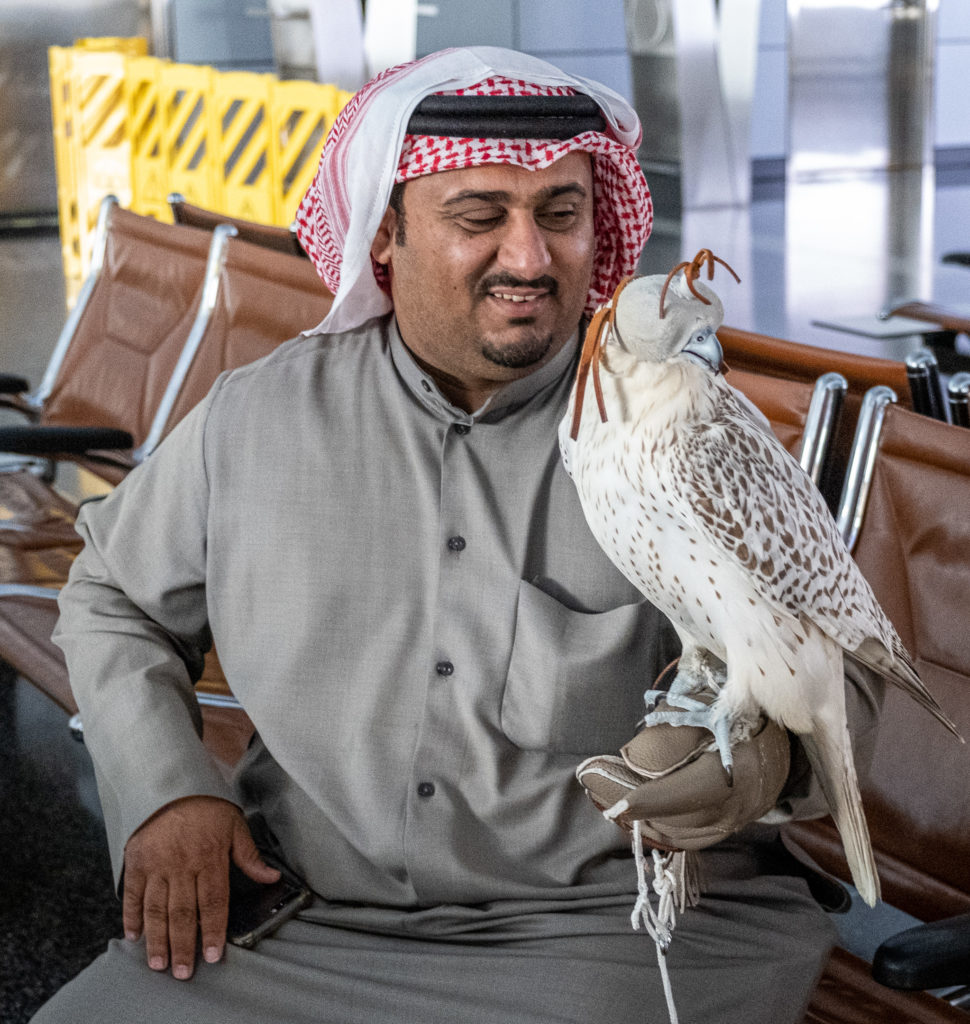
Do get a guide that appreciates Qatari culture and one that is willing to share what they know and believe about the predominant religion. You aren’t just seeing sights when you are admitted inside the culture from a true believer’s vantage. It makes for a much richer travel experience.

One final note and back to where we started kind of. Music. I didn’t realize it at the time and I didn’t register what was missing almost until we left, but there was NO music to speak of in Qatar. No contemporary music at all. Not even in that sad little smoky bar. Clearly classical music is favored and a ton of money was spent on that opera house but even in the malls and elevators I don’t remember hearing even MUZAK. When we started paying attention to it, upon retrospect we remembered that our guide was heading out to an oud concert back at the Opera House when he left us one day and he seemed inordinately excited about that. I mean he was REALLY excited for a free oud concert. I guess if you’re music deprived the oud will do it for you in a pinch. For me, you’ve heard one oud, you’ve heard them all. I know. I’m an ethno-centric jerk but, I need tunes, even abroad. Even corny ones if that’s all I can get. Sue me.
